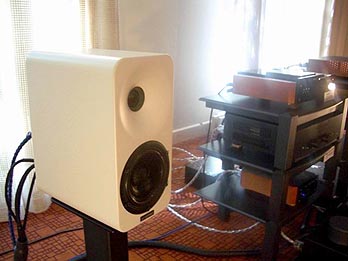[quote author="Giganova"]I'm with barefoot and vote for the Madison:
http://www.madisound.com/bigavkit.html
The room for improvement could make this a great project since it starts at a very modest budget and everyone can improve as they see fot and we could compare our results.
I'm in![/quote]
This is a D'Appolito. Personally, considering very big range of opinions on using them as studio monitors, I wouldn't think about them until I have chance to audition in my enviroment.
The second consideration is purely financial. Instead of paying for two sets per channel for midwoofers, getting one but of a higher quality more expensive driver might be a better option.
If you want to go safe, avoid box building and port tuning, and without getting into a hell of crossover breadboarding and fine tuning, then kit like this:
http://www.madisound.com/vifastudio.html
with Vifa PL woofer might be a very good option.
Or some well documented designes from Zaph might be excellent and will be much cheaper.
[quote author="mhelin"]
I would absolutely use the MCM H-65 waveguide (zaphaudio.com link above) with the tweeter if you are going to build a passive crossover. There aren't practically any other ways to control the directivity at the crossover frequency and besides the tweeter and woofer should be time aligned (tweeter moved a little bit backwards).
Aluminium cone or kevlar are little bit difficult because of the breakup modes, you should really use at least 24 dB/oct or steeper crossover with them (something like a BruteFIR based PC crossover might be fine).[/quote]
Thanks for the MCM pointer. I was trying to find waveguide without luck:
LINK
For Aluminums or Kevlars, besides higher order crossovers you might need to use a notch filter, as well. This is one of the reasons I want to use biamping with electronic crossover (at least for now).
[quote author="burdij"]
original crossover was above 3.5KHZ .[/quote]
The 3.5K point sounds very high for 10" woofer.











![Soldering Iron Kit, 120W LED Digital Advanced Solder Iron Soldering Gun kit, 110V Welding Tools, Smart Temperature Control [356℉-932℉], Extra 5pcs Tips, Auto Sleep, Temp Calibration, Orange](https://m.media-amazon.com/images/I/51sFKu9SdeL._SL500_.jpg)

























